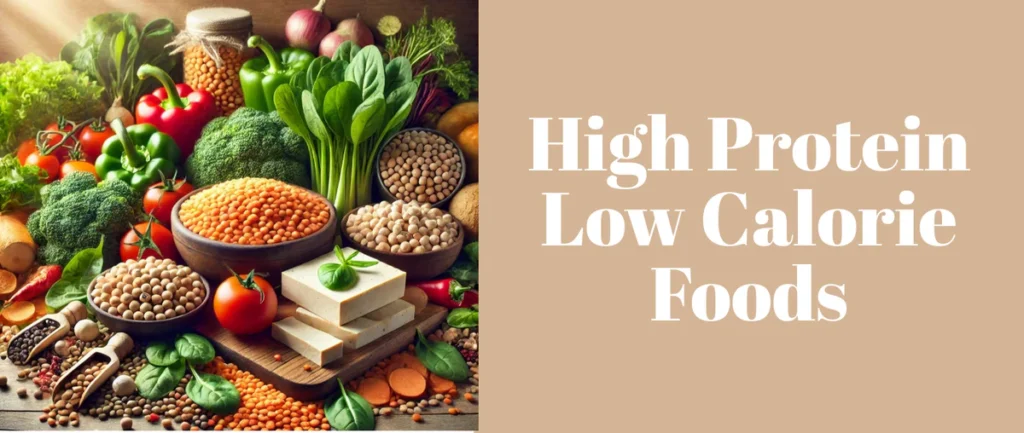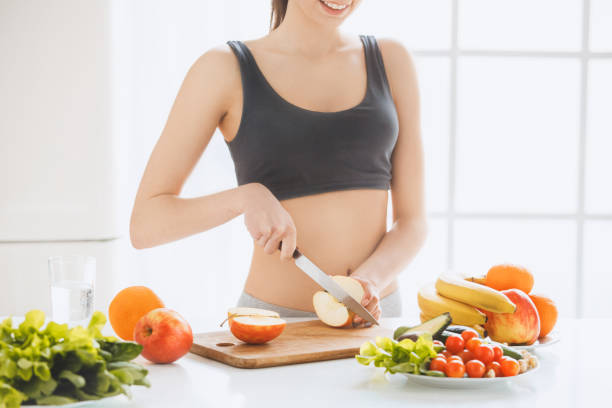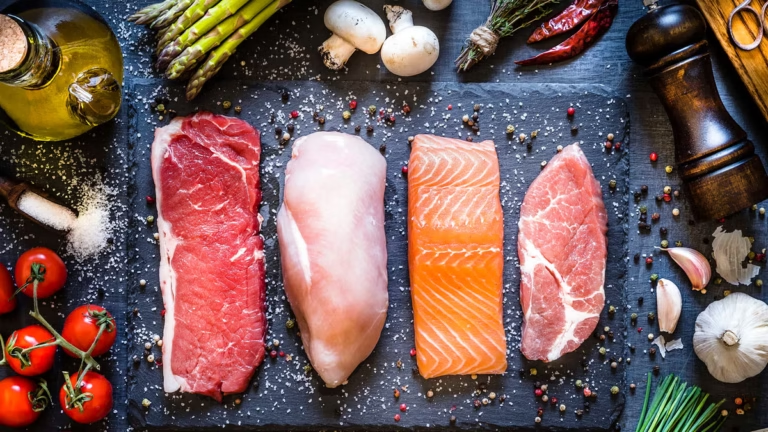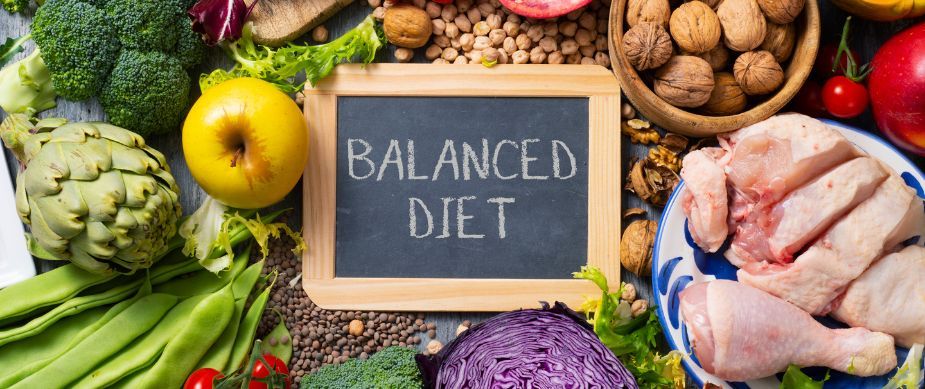Maintaining a healthy diet is all about balance, and high-protein, low-calorie foods can be a game-changer in achieving fitness goals. Whether you’re aiming to lose weight, build muscle, or maintain overall wellness, incorporating the right foods can enhance your diet without excess calories. In this guide, we’ll explore the best lean protein sources, their benefits, and tips on how to incorporate them into your daily routine.

Why Choose High-Protein, Low-Calorie Foods?
Protein is essential for muscle growth, metabolism, and overall body function. However, not all protein sources are equal. Some protein-rich foods also contain high amounts of fat and calories, making it challenging to stay within a calorie deficit for weight loss. That’s where lean protein options come in—they provide the necessary nutrients without unnecessary calories.
Benefits of High-Protein, Low-Calorie Foods

Supports Weight Loss: Protein increases satiety, helping to curb hunger and prevent overeating.
Enhances Muscle Growth: Consuming adequate protein is crucial for muscle repair and growth.
Boosts Metabolism: A protein-rich diet can increase your metabolism due to its high thermic effect.
Maintains Lean Muscle Mass: While on a calorie deficit, protein preserves muscle tissue.
Improves Overall Health: Protein supports immune function, skin health, and hormone production.
Best High-Protein, Low-Calorie Foods to Include in Your Diet

Here’s a list of the best lean protein sources that are nutrient-dense yet low in calories.
1. Skinless Chicken Breast
A staple in many healthy diets, chicken breast is packed with lean protein while being low in fat.
Protein per 100g: 31g
Calories per 100g: 165
Best ways to eat: Grilled, baked, or shredded in salads.
2. Egg Whites
While whole eggs are nutritious, egg whites provide pure protein with almost no fat or cholesterol.
Protein per 100g: 11g
Calories per 100g: 52
Best ways to eat: Scrambled, boiled, or added to smoothies.
3. Greek Yogurt (Non-Fat)
Greek yogurt is an excellent source of low-calorie protein with probiotics for gut health.
Protein per 100g: 10g
Calories per 100g: 59
Best ways to eat: As a snack, in smoothies, or as a salad dressing base.
4. Cottage Cheese (Low-Fat)
Cottage cheese is rich in casein protein, which is slow-digesting and great for muscle recovery.
Protein per 100g: 11g
Calories per 100g: 98
Best ways to eat: With fruits, in salads, or as a spread.
5. Tuna (Canned in Water)
Tuna is one of the best lean seafood protein sources, making it an excellent option for healthy eating.
Protein per 100g: 29g
Calories per 100g: 132
Best ways to eat: In sandwiches, salads, or sushi.
6. White Fish (Cod, Tilapia, Haddock)
Fish like cod and tilapia provide high-quality protein with minimal calories and fats.
Protein per 100g: 20g
Calories per 100g: 85
Best ways to eat: Grilled, baked, or steamed.
7. Lentils
For a plant-based option, lentils are an excellent low-calorie protein source with fiber and iron.
Protein per 100g (cooked): 9g
Calories per 100g (cooked): 116
Best ways to eat: In soups, curries, or salads.
8. Tofu
Tofu is a versatile, low-fat protein option for vegetarians and vegans.
Protein per 100g: 8g
Calories per 100g: 76
Best ways to eat: Stir-fried, grilled, or blended into smoothies.
9. Turkey Breast
Similar to chicken, turkey breast is a lean meat with high protein and low calories.
Protein per 100g: 29g
Calories per 100g: 135
Best ways to eat: Roasted, grilled, or sliced into wraps.
10. Edamame
Edamame, or young soybeans, are a plant-based protein powerhouse with essential amino acids.
Protein per 100g: 11g
Calories per 100g: 122
Best ways to eat: Steamed with salt, in salads, or as a snack.
How to Incorporate High-Protein, Low-Calorie Foods into Your Diet

Now that we’ve covered the best low-calorie protein sources, let’s discuss how to add them to your daily meals.
1. Start Your Day with Protein
Have egg whites with spinach or a Greek yogurt smoothie for breakfast.
Blend tofu into your smoothie for added protein.
2. Choose Lean Protein for Lunch and Dinner
Opt for grilled chicken or fish with steamed vegetables.
Add lentils or edamame to your salad for a plant-based protein boost.
Make a low-fat cottage cheese dip for a side snack.
3. Snack Smartly
Have Greek yogurt with berries or tuna on whole wheat crackers.
Roast chickpeas or edamame for a crunchy, protein-packed snack.
4. Stay Hydrated and Maintain a Balanced Diet
Drink plenty of water to aid digestion and protein metabolism.
Pair lean protein sources with fiber-rich vegetables for a well-rounded meal.
Final Thoughts

Incorporating high-protein, low-calorie foods into your diet is a smart way to stay full, fuel your muscles, and promote overall well-being. Whether you’re on a weight loss journey or looking to build lean muscle, choosing the right lean protein sources can help you reach your goals efficiently.
Start making mindful choices today and enjoy the benefits of nutrient-rich, low-calorie protein foods that support a healthier lifestyle!
